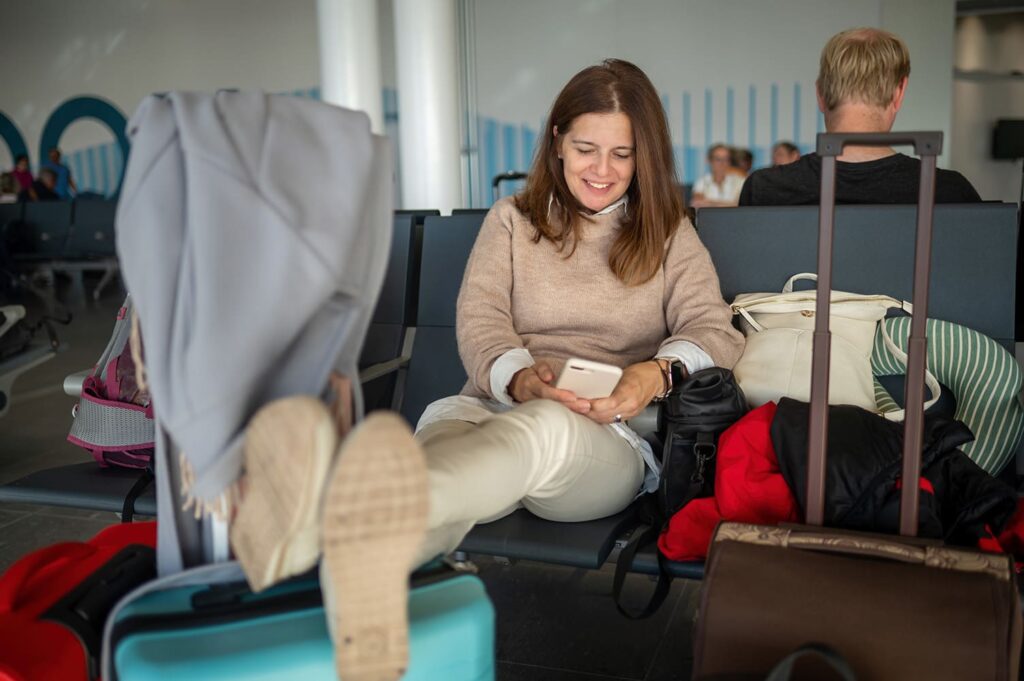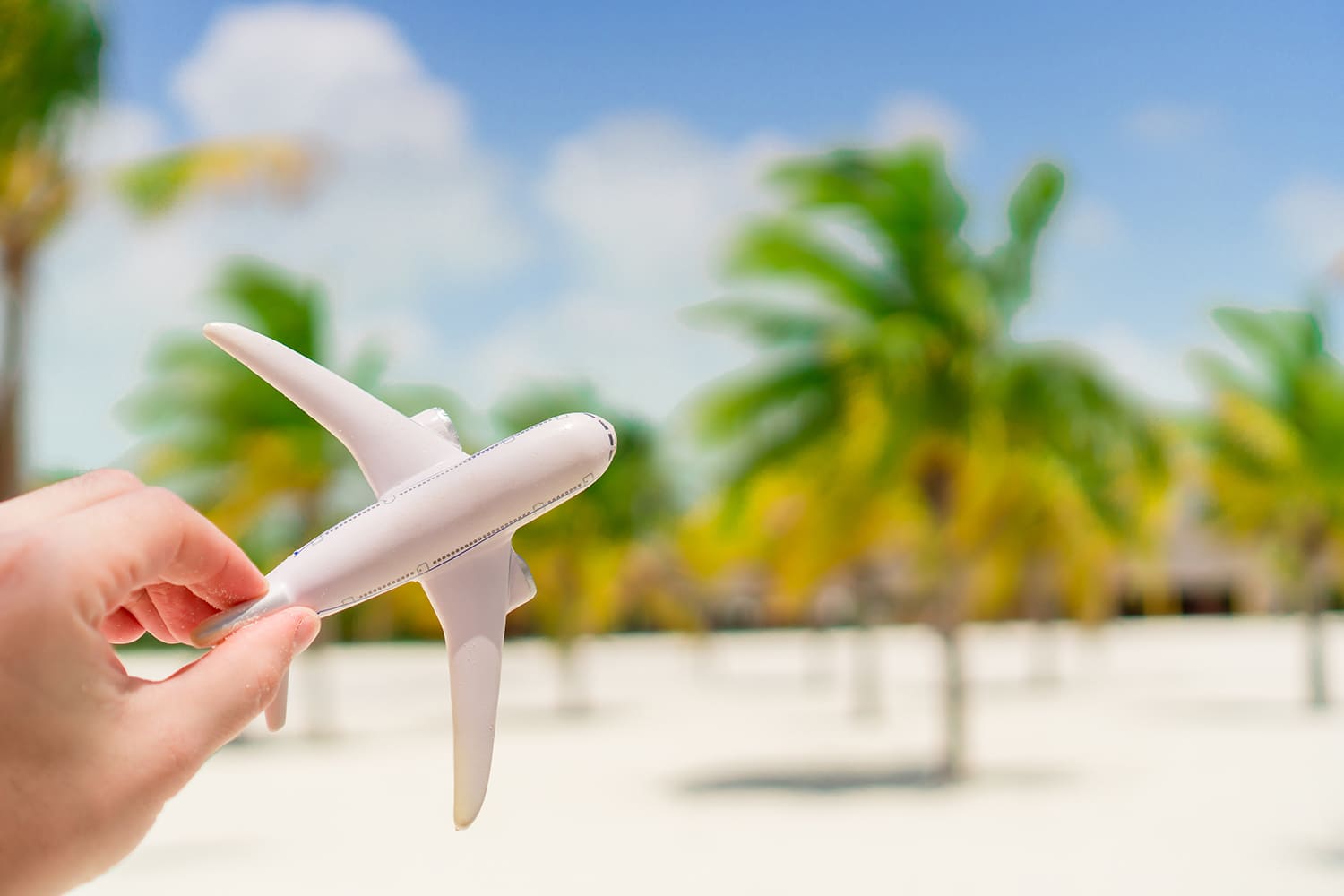As the summer and holiday seasons approach, many of us look forward to traveling to dream destinations. While planning hotels, routes, and itineraries, we often neglect something equally important: our health during long trips—especially leg health. Extended periods of sitting can increase the risk of blood clots in the legs, particularly for people with varicose veins. Is flying with varicose veins dangerous? The good news is that these risks can be significantly reduced with some simple precautions.
Why Do Flights Increase the Risk of Blood Clots?
During flights, especially long-haul ones, we tend to remain inactive for extended hours. This inactivity causes the muscles surrounding our leg veins to remain idle. Since these muscles play a crucial role in pushing deoxygenated blood upward toward the lungs, circulation slows down.
As a result, some people may experience ankle swelling, while others might develop deep vein thrombosis (DVT)—a condition where blood clots form in the veins.
Moreover, several additional risk factors can increase the likelihood of clot formation during flights:
Key Risk Factors for Clot Formation During Travel
- Smoking: Damages the vein walls and encourages clotting on rough surfaces.
- Recent surgery or injury: Healing tissues are more prone to forming clots.
- Age over 40: Aging weakens vein walls and valves, slowing blood flow.
- Varicose veins: Blood moves slower in enlarged veins, increasing clot risk.
- Blood clotting disorders: Conditions like Factor V Leiden or protein C/S deficiency significantly raise the risk.
- Hormonal changes: Pregnancy, menopause, hormone therapy, or birth control pills cause estrogen fluctuations, weakening vein walls.
If any of these apply to you, you’re more vulnerable to clotting issues—especially during extended travel.

7 Smart Tips for Safer Travel with Varicose Veins
1. Move Your Calf Muscles Regularly
You don’t have to walk down the aisle to get your blood flowing. While seated, mimic a walking motion by pressing your toes into the floor and lifting your heels up and down. This “toe-walking” motion activates your calf muscles, which squeeze the veins and help pump blood back toward the heart.
Repeat this movement frequently during flights or even long car rides.
2. Wear Loose and Comfortable Clothing
Avoid tight clothing around the waist or abdomen. Snug garments can increase intra-abdominal pressure, making it harder for blood to flow from your legs back to your heart. Opt for breathable, loose-fitting clothes that promote circulation.
3. Stay Hydrated with Water—Avoid Alcohol and Caffeine
Dehydration thickens the blood and raises clot risk. During flights, make sure to drink plenty of water and avoid beverages that lead to fluid loss, such as alcohol or caffeinated drinks. Staying hydrated also keeps your digestion and overall metabolism in check.
4. Avoid Sleeping Pills on Flights
While it may be tempting to sleep through a long flight, using sleeping pills can keep you immobile for too long, which significantly increases your clot risk. Instead, try to rest naturally using an eye mask or travel pillow, and set alarms to remind yourself to move.
5. Use Graduated Compression Stockings
Forget outdated, uncomfortable “granny stockings.” Today’s graduated compression socks are breathable, stylish, and effective. These specially designed socks apply the most pressure at the ankle and gradually decrease pressure upward, mimicking a gentle massage that supports venous return.
Make sure to get a pair prescribed by a healthcare provider to ensure proper fit and effectiveness.
6. Treat Your Varicose Veins Before Traveling
If you already have varicose veins, consider getting them treated before your trip. Modern, minimally invasive treatment methods have made it possible to manage venous insufficiency quickly and safely, including:
- Foam Sclerotherapy
- Endovenous Truncal Ablation (EVTA)
- Ambulatory Phlebectomy
- Doppler-Guided Chemical Ablation/Blockage
Treating your varicose veins in advance not only enhances your comfort but also significantly reduces the risk of serious complications during or after travel. To explore more about varicose veins treatment methods click here
7. Don’t Panic—Plan Smart
With the right planning and proactive steps, you can confidently eliminate the fear of “What if I get a clot while flying?” Knowledge is power—and preparation is peace of mind.
Conclusion: Keep Your Legs Safe, Enjoy Your Journey
Holiday travel should be enjoyable, not stressful. If you or someone you love has varicose veins or any risk factor listed above, taking a few smart precautions can make a world of difference.
Stay active, hydrated, and informed. And if in doubt, consult with a vascular specialist before your trip. Your legs will thank you—mile after mile.
For contact and appointment click here
Suggested Internal Links
More about modern varicose veins treatment methods
Suggested External Links
Flying with Varicose Veins: Is It Safe? Click here to read full article

